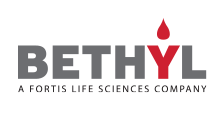Rabbit anti-STING/TMEM173 Recombinant Monoclonal Antibody [BLR373N]

Product Details
Specifications
Request Formulation Change Phosphate Buffered Saline (PBS) with 0.09% Sodium Azide, BSA-Free
Request Formulation Change
Immunogen was a peptide representing a region between residue 329 and the C-terminus (residue 379) of human Stimulator of interferon genes protein (STING, aka TMEM173) using the numbering given in entry NP_938023.1 (Gene ID 340061.
Additional Product Information
STING/TMEM173 is a facilitator of innate immune signaling that acts as a sensor of cytosolic DNA from bacteria and viruses and promotes the production of type I interferon (IFN-alpha and IFN-beta). Innate immune response is triggered in response to non-CpG double-stranded DNA from viruses and bacteria delivered to the cytoplasm. Acts by recognizing and binding cyclic di-GMP (c-di-GMP), a second messenger produced by bacteria, and cyclic GMP-AMP (cGAMP), a messenger produced in response to DNA virus in the cytosol: upon binding of c-di-GMP or cGAMP, autoinhibition is alleviated and TMEM173/STING is able to activate both NF-kappa-B and IRF3 transcription pathways to induce expression of type I interferon and exert a potent anti-viral state. May be involved in translocon function, the translocon possibly being able to influence the induction of type I interferons. May be involved in transduction of apoptotic signals via its association with the major histocompatibility complex class II (MHC-II). Mediates death signaling via activation of the extracellular signal-regulated kinase (ERK) pathway. Essential for the induction of IFN-beta in response to human herpes simplex virus 1 (HHV-1) infection. Exhibits 2',3' phosphodiester linkage-specific ligand recognition. Can bind both 2'-3' linked cGAMP and 3'-3' linked cGAMP but is preferentially activated by 2'-3' linked cGAMP. [taken from the Universal Protein Resource (UniProt) www.uniprot.org/uniprot/Q86WV6].
Alternate Names
endoplasmic reticulum IFN stimulator; endoplasmic reticulum interferon stimulator; ERIS; hMITA; hSTING; Mediator of IRF3 activation; MITA; mitochondrial mediator of IRF3 activation; MPYS; NET23; N-terminal methionine-proline-tyrosine-serine plasma membrane tetraspanner; SAVI; stimulator of interferon genes protein; stimulator of interferon protein; STING; STING-beta; TMEM173; Transmembrane protein 173
Applications
All western blot analysis is performed using 5% Milk-TBST for blocking and as antibody diluent. Primary antibody is incubated overnight.
Western blots of cell lysates are performed using Goat anti-Rabbit IgG Heavy and Light Chain Antibody (A120-101P).
Western blots of immunoprecipitates are performed using Goat anti-Rabbit Light Chain HRP Conjugate (A120-113P) with 5% Normal Pig Serum (S100-020) added to the blocking buffer.

